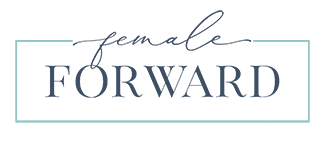
Using Brand Archetypes to Set Your Brand’s Personality
To Form An Emotional Connection with Your Target Audience
A brand archetype is a set of human character traits that reflect a brand’s identity, values, behaviors, and messages. It helps a brand present itself as a recognizable and relatable persona to its target audiences. It also makes customers connect with a brand on a deep-seated emotional level.
There are twelve common brand archetypes: the Outlaw, the Creator, or the Hero. They are based on the 12 personality archetypes developed by Carl Jung. Each archetype has its strengths, weaknesses, goals, and motivations. Choosing an archetype that aligns with your brand’s essence, can help you create an authentic brand personality and connect with your target audience.
How Your Brand Archetype Informs Positioning and Story
One of the benefits of using brand archetypes is that they can inform your brand positioning. Brand positioning is how you differentiate your brand from competitors and communicate your unique value proposition to your customers. Using an archetype to exemplify your brand personality allows customers to identify with your brand on a personal level. Using an archetype can position your brand as a leader, a challenger, a friend, or a guide in your industry.
Another benefit of using brand archetypes is that they can help you craft your brand story. A brand story is a narrative that connects your brand with your customers on an emotional level. It tells them who you are, what you stand for, why you exist, and how you can help them. An archetype helps you create a compelling and memorable brand story that engages your customers and inspires them to take action.
IKEA: The “Everyman” Archetype
One archetype is the Everyman or Regular Guy. Everyman brands are friendly, supportive, and down-to-earth. They desire connection and belonging.
Everyman brand strategies often include cost leadership with value. It can be difficult for Everyman brands to differentiate themselves, but by building trust with customers by providing high-quality at a reasonable cost they continually find value. These brands become a comfort zone for customers, to drive a sense of belonging and community.
One of the most recent and creative examples of an Everyman brand is IKEA. IKEA is a Swedish furniture retailer that is known for its affordable and functional products. However, IKEA launched a campaign called “Proudly Second Best”. The campaign was aimed at parents & families who are tired of being pressured to be perfect in every aspect of their lives.
The campaign featured humorous ads that showed families enjoying their imperfect lives with IKEA products. For example, one ad showed a mother holding her sleeping baby in a chair – next to her IKEA crib. Another shows a father feeding breakfast to his toddler sitting on his lap – not in his IKEA highchair. The humility and humanity of the campaign authentically connects to their core audience. And the creativity to play on second best:
- The parents are happy with their “second best” choices of holding their children versus using functional furniture.
- AND that IKEA is OK being the “second best” option for parents at that moment.
- AND that IKEA is OK with being seen as “second best” in the marketplace because they provide functional, affordable furniture.
The campaign used the Everyman archetype to position IKEA as a brand that understands and supports families who want to live authentically and happily. It also used humor and irony to challenge the stereotypes and expectations that society imposes on parents. It showed that IKEA products are not only functional but also emotional, supportive, and down-to-earth.
Takeaway of Using a Brand Archetype
The key takeaway from this example is that using brand archetypes can help you create a distinctive and appealing brand personality that connects with your customers on an emotional level. By choosing an archetype that matches your brand’s values and goals, you can position your brand as a leader, a challenger, a friend, or a guide in your industry.
You can also craft your brand story that engages your customers and inspires them to act. Could your brand benefit from identifying with an archetype? Or could your team use a workshop to better utilize that archetype in your brand’s positioning and strategy? Check out my services and send me a message today!
